How to Get from Tel Aviv to Jerusalem
Tel Aviv and Jerusalem are Israel’s two largest cities, as well as being huge tourist centres, meaning that the majority of visitors want to see both. Luckily, the two cities aren’t far apart - in fact, by European or North American standards, travelling between them is easy and cheap. Making a day trip takes minimal effort (indeed, some Israelis commute between the two cities five days a week) and whether you want to plan ahead or just wake up and decide to head off, it’s your choice. Here, we look at some of the different ways you can make the 54 km (33 mile) journey.
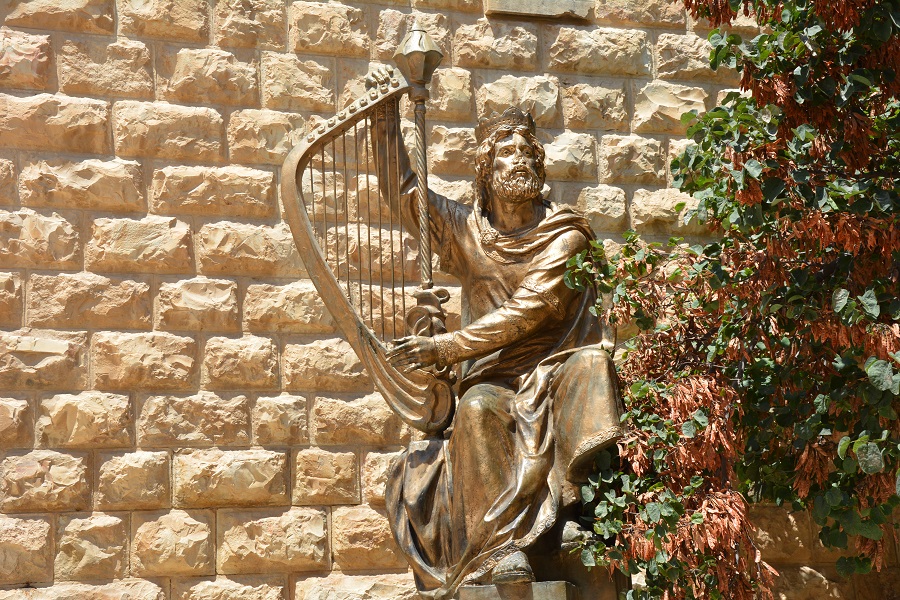
A statue of King David playing harp, Jerusalem. Photo credit: © Shutterstock
1. How to Travel Between Tel Aviv and Jerusalem by Bus
The Tel Aviv to Jerusalem bus service is highly recommended since it’s inexpensive and efficient, with buses leaving every 15 minutes from early morning to late at night. The Egged company runs this very popular service and if there is no traffic your journey should take between 45-55 minutes. If you want to know if it’s safe to travel from Tel Aviv to Jerusalem, then the answer is a resounding yes. Bus drivers are trained to high standards and, moreover, if any kind of problem arises, someone will inevitably offer you assistance - Israelis are very hospitable people and love to help! There are two central bus stations in Tel Aviv that operate this service:
- The Central Bus Station (Tachana Merkazit) located on Levinsky Street in the south of Tel Aviv, close to HaHagana train station. This operates bus line 405
- The Terminal 2000 station, on Namir Road/Arlozorov Street, in the north of Tel Aviv, which operates line 480.
Either you can pay the driver when you board the bus (cash is fine) or use a Rav Kav card. These cards can be purchased at many points in the city and loaded up with credit which can be used on buses within the city as well as longer journeys around the country. You can also buy a ticket beforehand from a machine (most machines have an ‘English’ option) or a staff member at one of the counters. The cost of a one-way ticket is 19 NIS and there is a discount if you buy a return-trip ticket.
All buses arrive at the Central Bus Station in Jerusalem, which is very close to the main highway and the Bridge of Chords. From here, it is very easy to navigate your way around Jerusalem - either by bus, the light railway (which runs all the way down to the Old City), or a taxi. The Jerusalem bus station also has an array of shops selling clothes, electronic goods, and food/beverages, so if you're desperate for a coffee or you’ve forgotten your phone charger, never fear. As with all cities in Israel, there is no public bus service on Shabbat i.e. from Friday afternoon until Saturday evening, after dark.
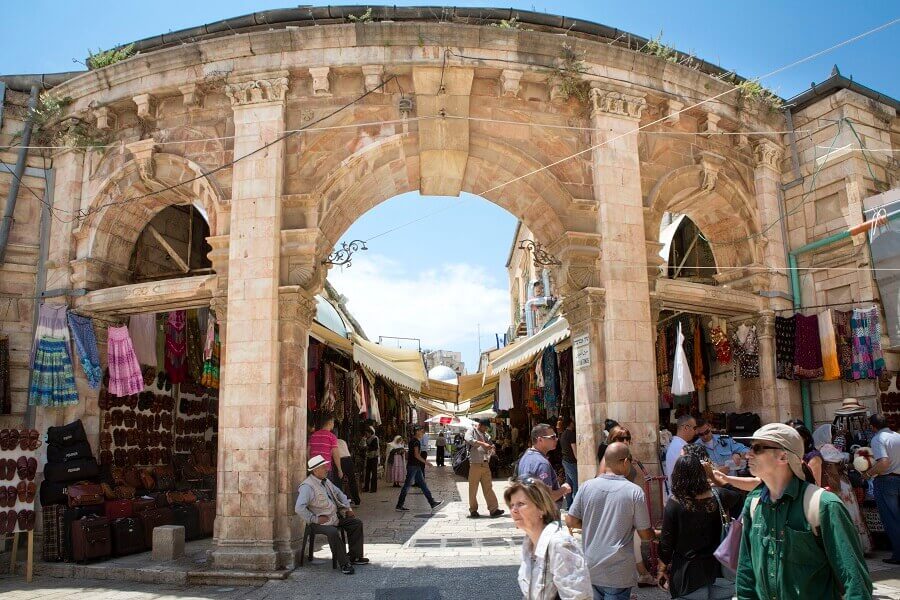
Old City market, Jerusalem. Photo credit: © Shutterstock
2. How to Travel Between Tel Aviv and Jerusalem by Train
After decades of talks that came to nothing and plans that regularly collapsed, the high-speed rail link connecting Israel’s two largest cities opened in 2019. The Tel Aviv to Jerusalem train is, without a doubt, a fantastic way to travel between the cities - it’s a direct service, using a spacious two-level train and it takes between 36 and 43 minutes, depending on which of the three Tel Aviv stations you depart from. These stations are:
- Savidor Center - like the Terminal 200 bus station (see above), Savidor is on the corner of Namir Road and Arlozorov Street.
- Shalom train station - close to the famous Azrieli Towers, this station is located on the HaShalom Interchange on the Ayalon Highway
- HaHagana railway station - the most southern of the three stations is also located on the Ayalon Highway, north of Highway 1 and 200 meters easy of the Tel Aviv Central Bus Station.
A one-way ride costs 23.50 NIS and for much of the day, the train runs every 15-20 minutes. As with the Egged buses (see above) you can use your Rav Kav card or buy tickets from cashiers or machines in the station. You will arrive at the state-of-the-art, Yitzhak Navon station in Jerusalem, complete with modern design, vaulted ceilings, and beautiful wall mosaics. It’s also one of the world’s deepest stations (80 meters deep) and conveniently located on Jaffa Street, with access to city buses, taxis, and the famed light railway, which will transport you to downtown Jerusalem and the Old City in just a few minutes.
Jerusalem light railway, Israel. Photo credit: © Dmitry Mishin
3. Taxi - Shared or Private
In all of the major cities in Israel, you will see small yellow vans standing at their main bus stations. These are called ‘sheruts’ and basically, they are ‘shared taxis.’ They take 10 passengers and are not owned by the government, which means that they run on Shabbat (unlike Egged buses and trains, which stop between Friday afternoon and Saturday evening).
All you need to do is climb in and pay the driver in cash (22 NIS). Once the seats are all filled, off you go! (Bear in mind that you might have to wait a few minutes for the sheruts to fill up). Sheruts leave from the Tel Aviv Central Bus Station on the ground floor, just outside the main entrance, and can drop you either close to the Jerusalem bus station or downtown, close to Tzion Square and a short walk from the Old City.
For more comfort (and if you’re willing to pay a premium) then it’s possible to take a private taxi from Tel Aviv to Jerusalem. Either ask your concierge to arrange this service for you or download the Gett Taxi app (as yet, there is no Uber in Israel). Expect to pay around 350 NIS door to door (and more at night or on Shabbat). 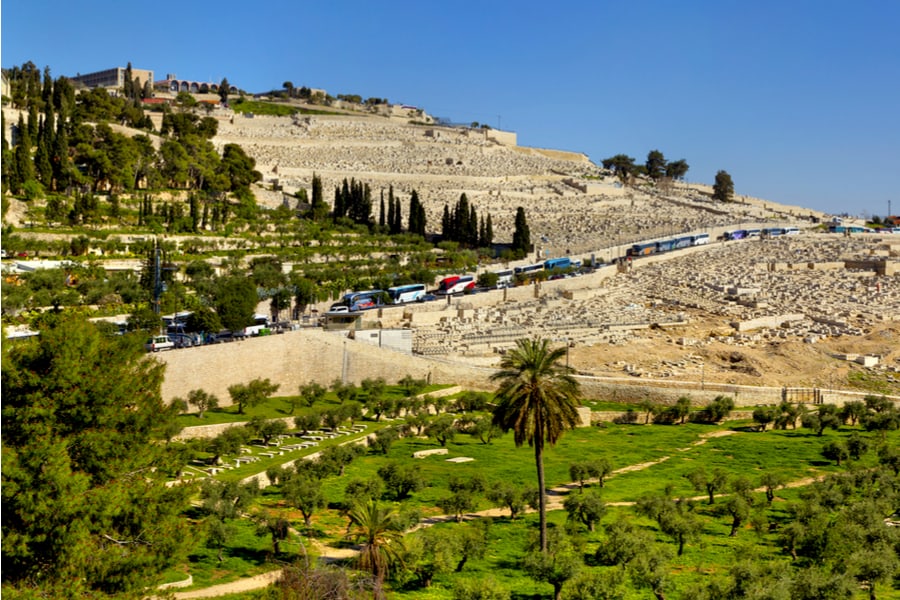
Buses on Mount of Olives, Jerusalem. Photo credit: © Shutterstock
4. Private Transfer
A Tel Aviv to Jerusalem private transfer is a comfortable and convenient way to travel and is easily organized through a trusted tour operator. You will be driven in a vehicle that is comfortable and air-conditioned and, of course, if you wish to make a detour along the way (to visit the village of Abu Gosh, for example, or grab a cup of coffee at the ‘Elvis Diner’ then that’s your prerogative). You should expect to pay around 700 NIS for this service.
5. Organized Trips to Jerusalem
If you’re based in Tel Aviv, but want to visit Jerusalem and see as much as you can in a set period of time, it’s really worthwhile considering one of the many Jerusalem tours on offer. Taking a guided trip in Israel really takes the hassle out of everything - you’ll have a driver, a guide and - whether it’s one, two, or three days - the chances are you’ll get to see quite a bit more than if you’re traveling under your own steam.
There are all kinds of Israel day tours and Jerusalem tour packages available - whether you want to explore the Old City, visit ancient churches, wander the world-class Israel Museum or take a stroll in the vibrant, bustling Mahane Yehuda market, there’s something that will suit you. Jerusalem is a city that offers a taste of everything - culture, history, architecture, food, and scenery. It’s probably one of the most extraordinary cities you’ll ever visit so soak it up.
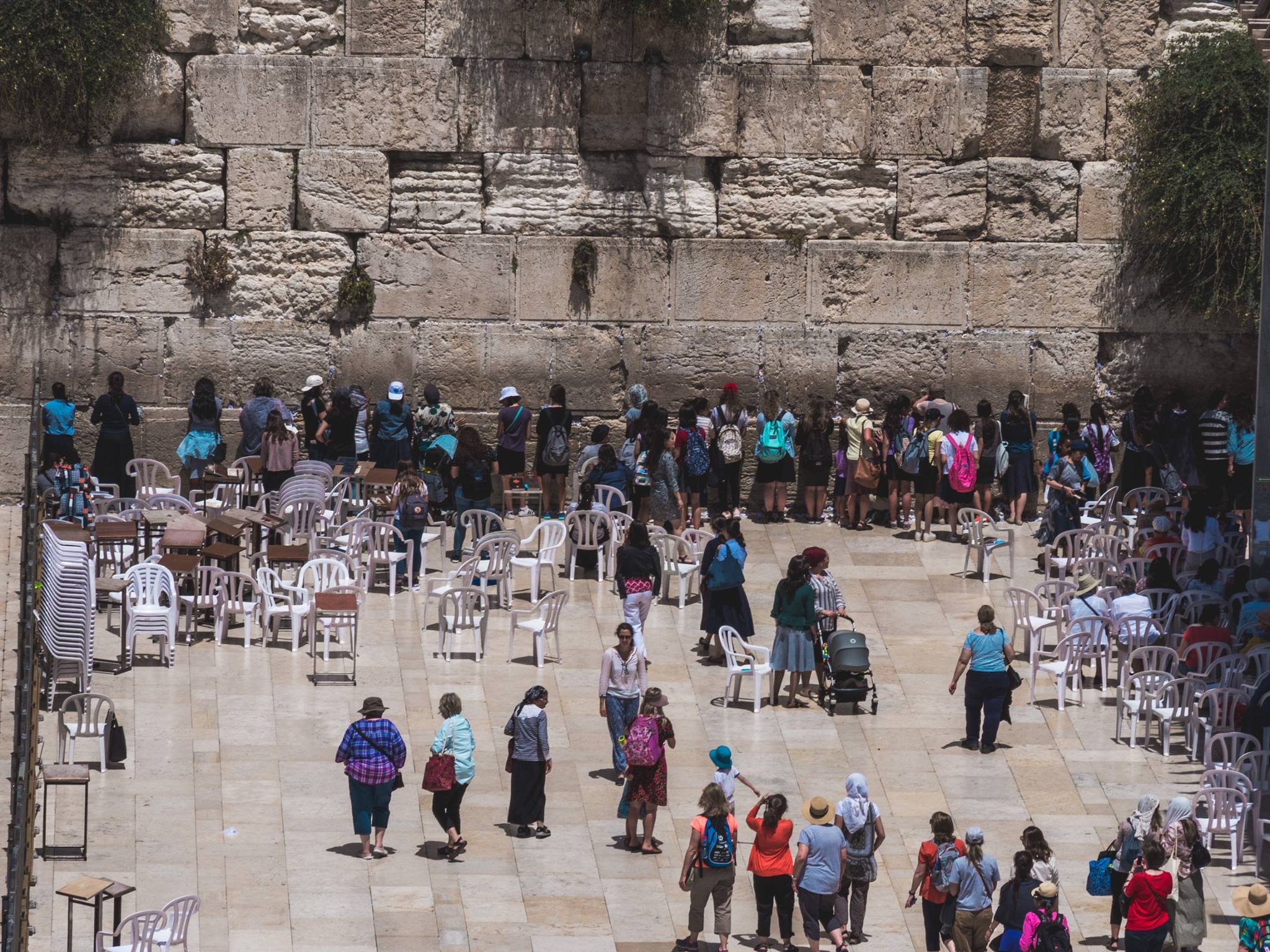
The Wailing Wall, Jerusalem. Photo credit: © Dmitry Mishin
6. Rent a Car
Renting a car in Israel is not difficult - there are plenty of companies around and prices are reasonable. GalCal, Hertz, Shlomo Sixt, and Hagar are some of the most reputable names, and booking via their websites (all in English) is easy. All you need is your international driver’s license, your passport, and a credit card. Allow about half an hour to sort out the paperwork and then you’ll be good to go.
There are two major routes that you can take - either Road 1 or Road 443, via Modiin. Traffic is notoriously bad on these roads early in the morning and later, after the workday ends, so try and plan your journey in quieter hours, otherwise, your journey could double in time. Also, bear in mind that parking is limited and expensive in Jerusalem itself, so if you’re visiting just the Old City itself (rather than combining your city trip with a tour of Masada and the Dead Sea for example), you’ll be better off using public transport or taking an organized Jerusalem tour from Tel Aviv.
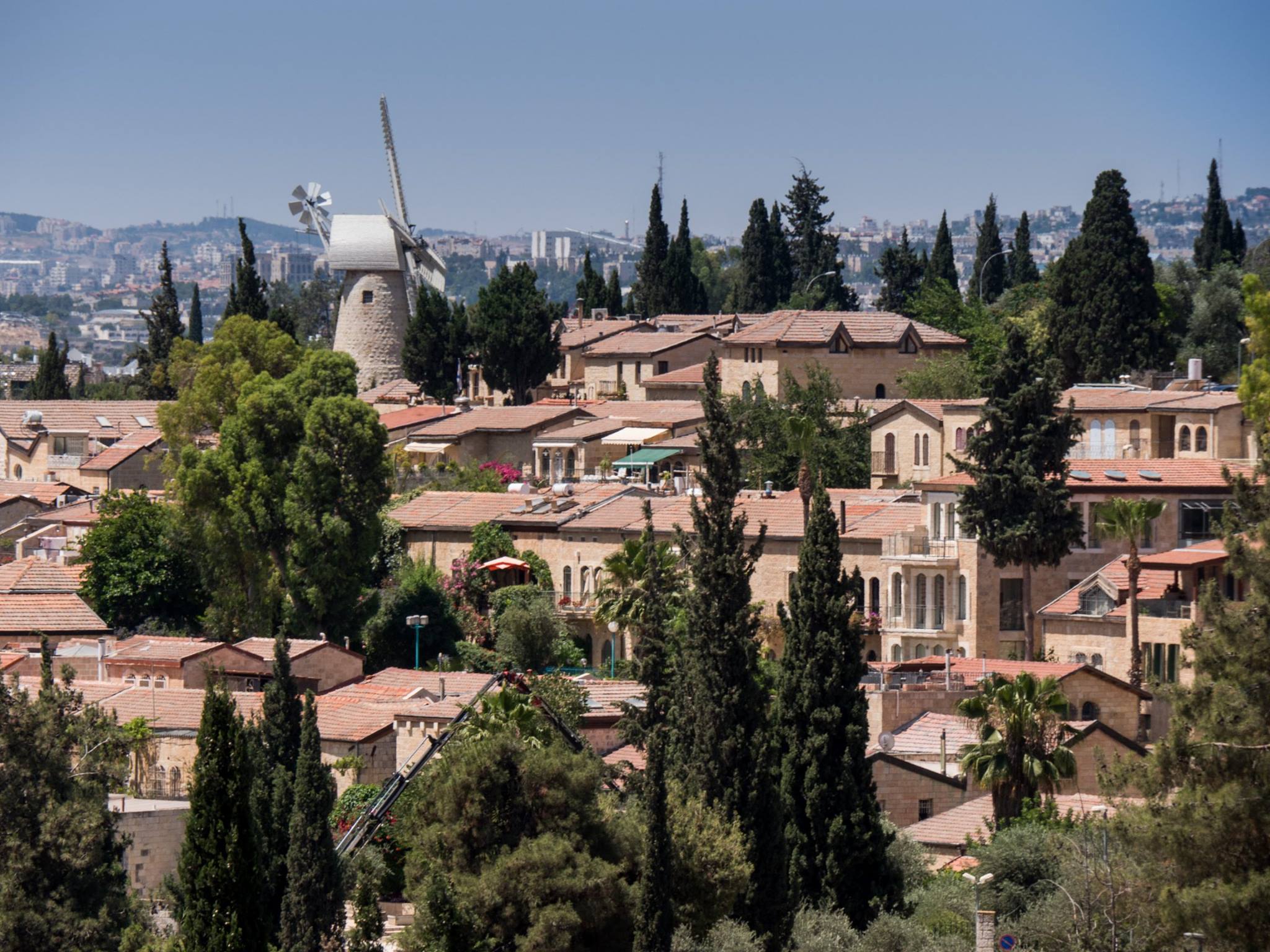
Montefiore Windmill, Jerusalem. Photo credit: © Dmitry Mishin
 Login / Register
Login / Register
 Contact Us
Contact Us
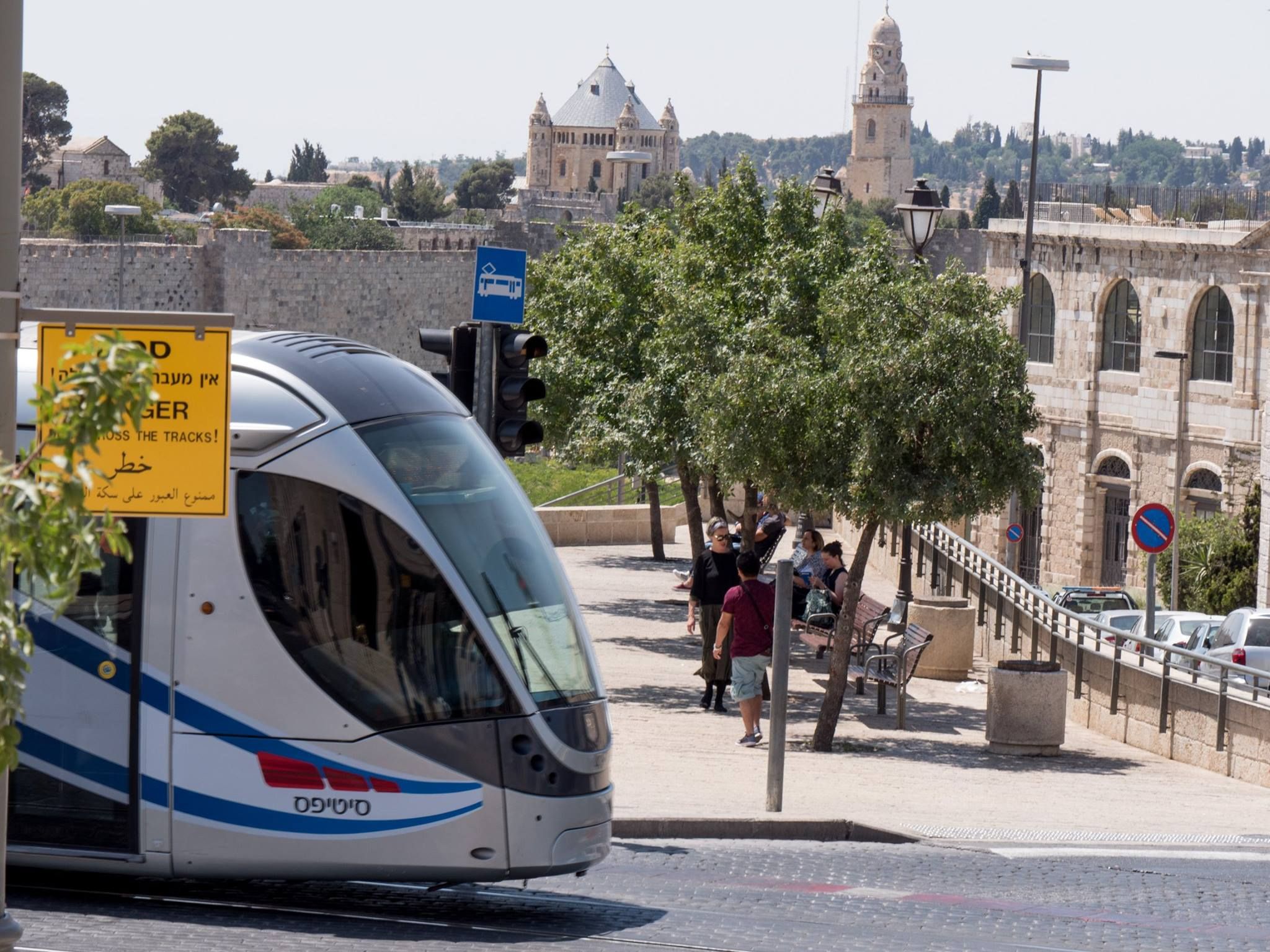
 Certificate of Excellence
Certificate of Excellence Guaranteed Departure
Guaranteed Departure Low Prices Guaranteed
Low Prices Guaranteed 24/7 Support
24/7 Support




